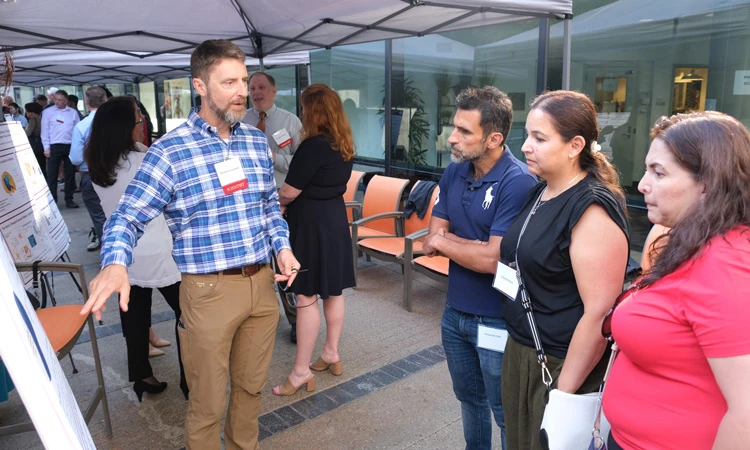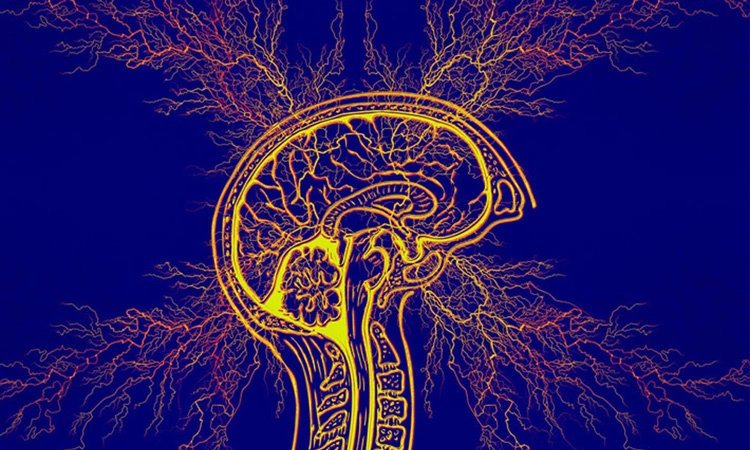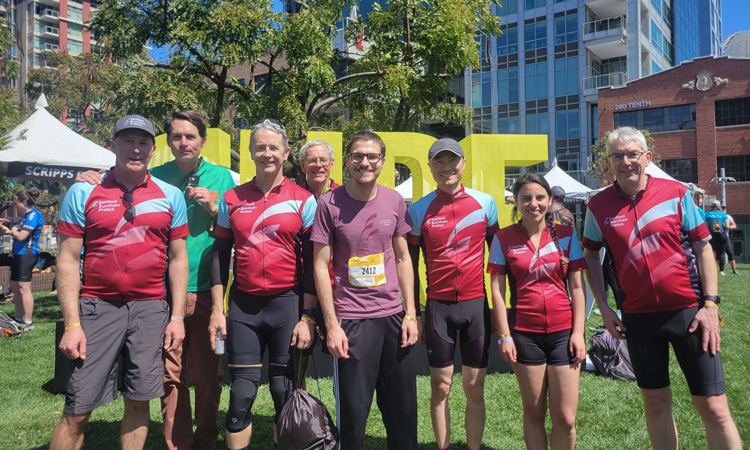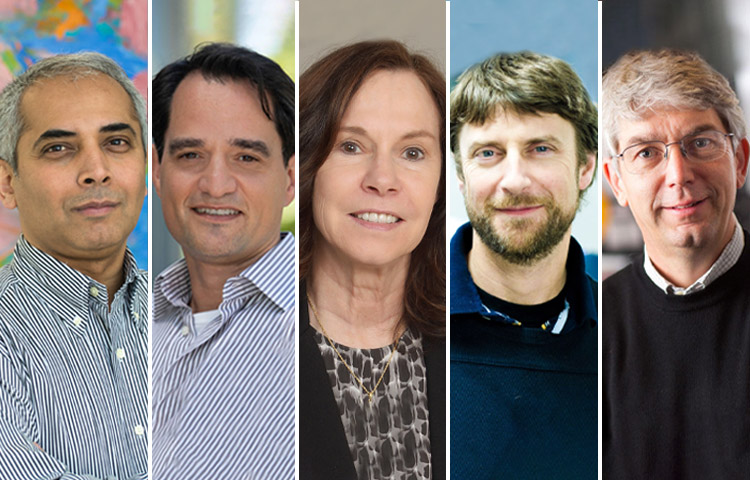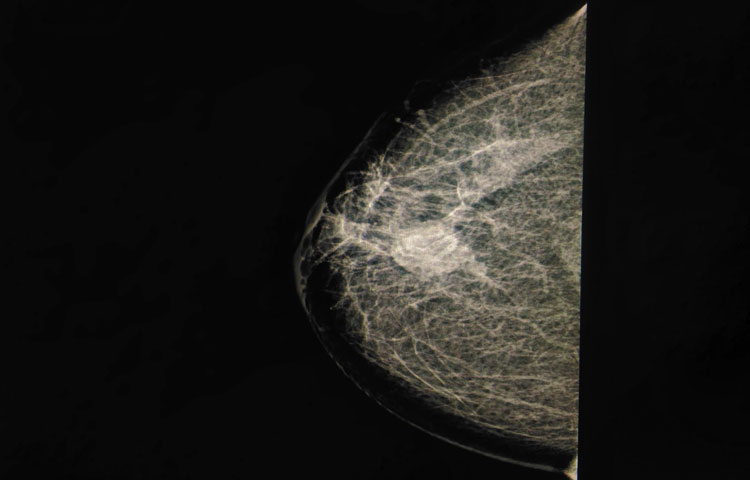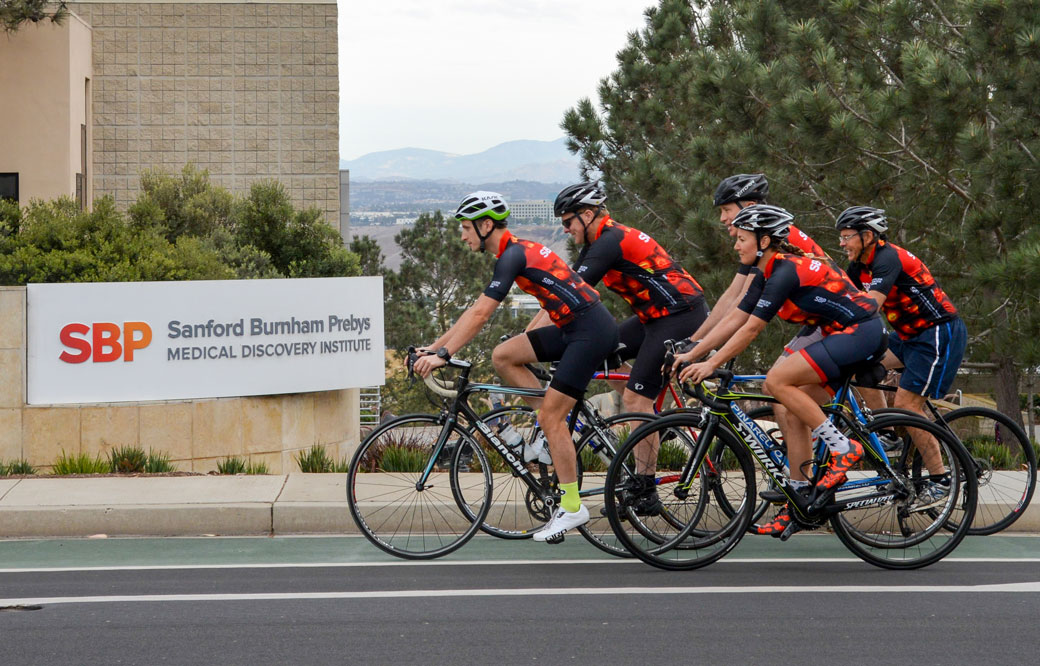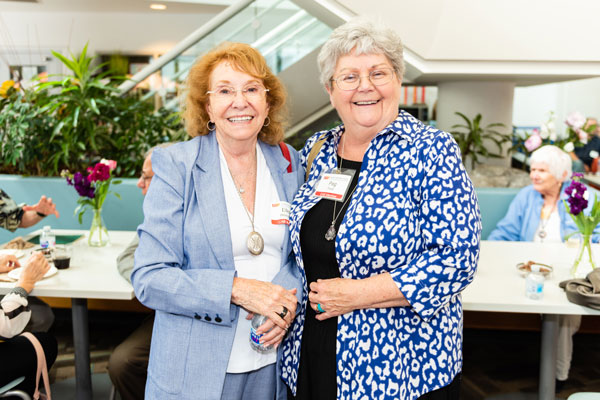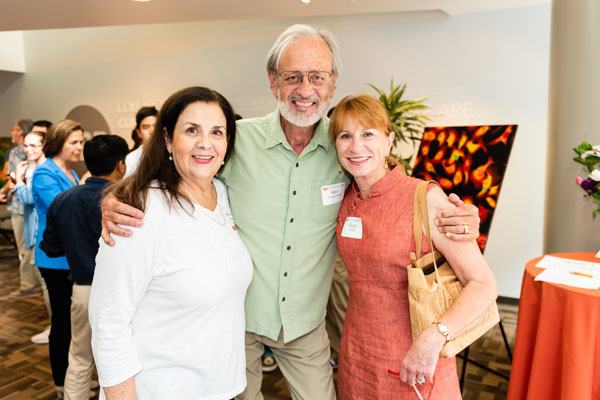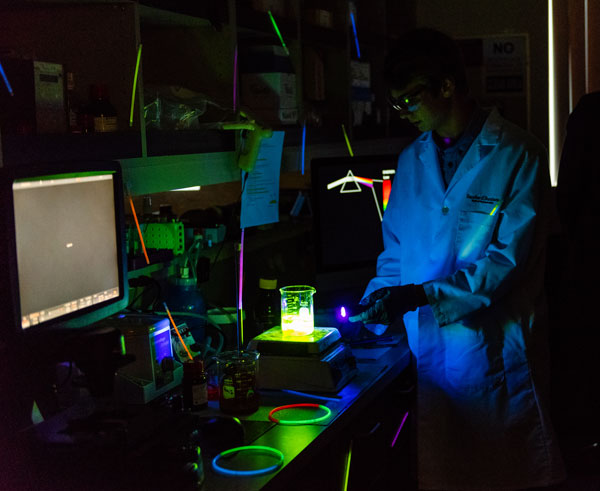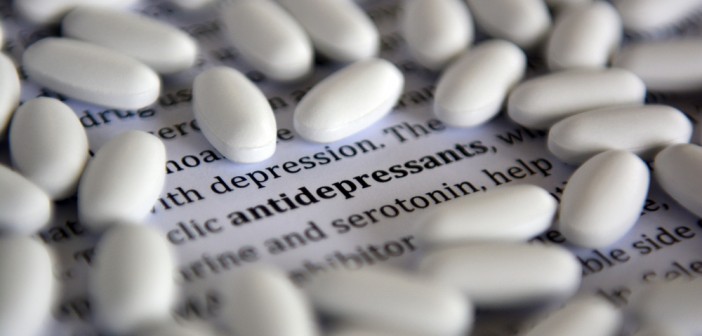Scientists and clinicians from three local research institutions converged July 31 to discuss new ways to treat multiple addictions at Sanford Burnham Prebys open house
The NCI-designated Cancer Center at Sanford Burnham Prebys welcomed San Diego community members to the institute’s campus on July 31, 2024 for an open house focused on addiction research. The Cancer Center team developed the event in partnership with scientists from Scripps Research and the University of California San Diego School of Medicine.
Ze’ev Ronai, PhD, director of the Sanford Burnham Prebys Cancer Center, formally opened the event and welcomed attendees before introducing David A. Brenner, MD, president and CEO of Sanford Burnham Prebys.
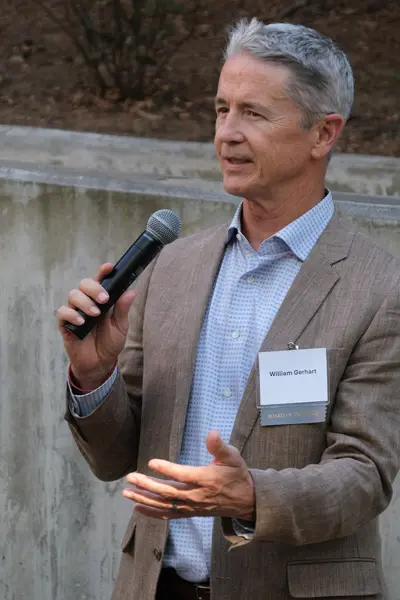
William Gerhart, chair of the Sanford Burnham Prebys board of trustees, delivered welcoming remarks focused on the potential benefits to families of improving the treatment and prevention of addiction and addiction-associated cancers.
“As I have learned more about the research being presented here, I am impressed by just how much of a powerhouse we have on this mesa regarding both cancer and addiction science,” said Brenner.
William Gerhart, chair of the Sanford Burnham Prebys board of trustees; Nicholas Cosford, PhD, co-director of the Cancer Molecular Therapeutics Program; and Michael Jackson, PhD, senior vice president of Drug Discovery and Development at the Conrad Prebys Center for Chemical Genomics (Prebys Center), also provided opening remarks emphasizing the collaborative nature of the featured research as well as the potential benefits to families of improving the treatment and prevention of addiction and addiction-associated cancers.
Attendees had the opportunity to learn from and interact with the following scientists at stations featuring posters describing research underway at all three represented institutions:
In addition to his welcoming comments, Cosford also presented an overview of the many links between addiction and cancer.
- Douglas Sheffler, PhD, is an associate professor in the Center for Therapeutics Discovery at Sanford Burnham Prebys. Sheffler discussed a drug discovery effort focused on treating nicotine addiction.
- Benjamin Mckenna, PhD, is an assistant clinical professor of psychiatry at UC San Diego School of Medicine and staff psychologist at Veterans Affairs San Diego Healthcare System. Mckenna presented on the same drug as Sheffler with an update on phase I clinical trial results regarding safety, optimal dosage and efficacy.
- Steven Olson, PhD, executive director of Medicinal Chemistry at the Prebys Center, presented on work being conducted at the center in collaboration with Jackson. Olson described a drug being studied as an alternative to opioids that has shown promising benefits for reducing pain and addiction-related behavior.
- Kokila Shankar, PhD, is a postdoctoral associate at Sanford Burnham Prebys working in the Cosford lab. Shankar detailed efforts to find new drugs to treat alcohol use disorder, which is estimated to cause approximately one of every 25 cancer diagnoses.
- Bryan Cruz, PhD, is a postdoctoral fellow at Scripps Research working in the lab of Marisa Roberto, PhD, vice chair and Paul and Cleo Schimmel Endowed Chair in the Department of Molecular Medicine. Cruz discussed his research to uncover new ways of treating alcohol use disorder rooted in posttraumatic stress disorder, and thereby reduce cancer cases associated with excessive alcohol consumption.
- Valentina Vozella, PhD, is a postdoctoral researcher in the Department of Molecular Medicine at Scripps Research. She also is a member of the Roberto lab. Vozella presented on studies regarding the effect of social isolation on the development of alcohol use disorder during adolescence, as well as on potential methods of treatment and prevention.
Participants were able to tour the Prebys Center, which is the institute’s comprehensive center for drug discovery and chemical biology. Visitors were able to see how the center’s researchers can quickly test the potential effectiveness of hundreds of thousands of compounds to find new prospective treatments. Many scientists at Sanford Burnham Prebys partner with the Prebys Center to conduct drug discovery searches based on new research findings, including several of the event’s poster presenters.
The open house featured a reception with remarks from Robert Anthenelli, MD, a professor in the Department of Psychiatry at UC San Diego School of Medicine. Anthenelli’s research focuses on developing new or improved treatments for cancer-causing tobacco and alcohol use disorders. He shared insights he has gained as a physician-scientist working in this area over the past 30 years.
The reception also included concluding remarks from Helen Eckmann, EdD, an NCI-designated Cancer Center Community Advisory Board member. The board hosts the center’s open house events. Its members strive to bridge the gap between biomedical science and the people who need it most: patients and the families and friends who love and support them.
